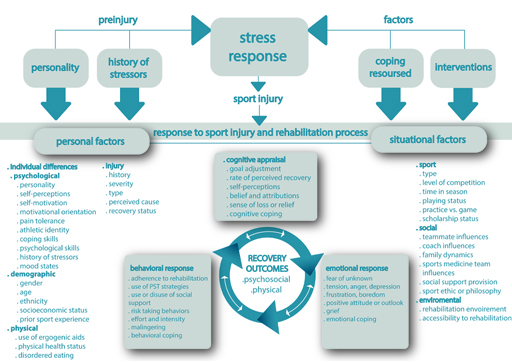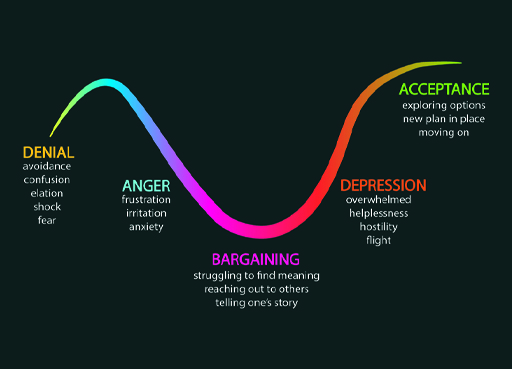3 Applying models of psychological response to sport injury
In the previous section you were introduced to three models of psychological response to sport injury:
- Kübler-Ross’s (1969) Grief response model
- Brewer’s (1994) Cognitive appraisal model
- Wiese-Bjornstal et al.’s (1998) Integrated model of psychological response to sport injury
In the next activity you will apply these models to our case study Lois.
Activity 4 Applying the models
Read the information in the box below and then try to apply each of the three models to Lois, thinking about how each might explain her response to injury. As you do this, think about the strengths and limitations of each model and decide which model you think is most valuable.


When Lois first became injured, she was extremely upset and angry as she felt that her world had fallen apart. Her whole life was centred on athletics and her goal of being a successful athlete. She was angry because she felt that the injury was taking her dreams away from her. Initially, she refused to accept the diagnosis and was adamant that she would return to training and competition long before her physiotherapist suggested. Gradually, she has grown to accept that the injury will cause her to miss a long period of training and competition. She finds this very frustrating and feels jealous when she hears other athletes talking about training sessions or competitions they have undertaken. She is trying to focus her attention on her rehabilitation programme, but she is feeling very demotivated and down as she finds her rehabilitation programme very boring in comparison to athletics training. Consequently, her adherence to her rehabilitation sessions has not been very good. Lois is also starting to experience doubts about her ability to recover from the injury and to regain her pre-injury form when she does return. She is looking forward to eventually returning to training but is worried about re-injuring herself and sometimes experiences flashbacks of when the injury occurred. |
Discussion
As you examine Lois’s case study, you can probably see some evidence of all five stages of Kübler-Ross’s (1969) model, although the stages do not necessarily occur in the specified order (for example, anger seems to come before denial). The main limitation of grief response models is their rigidity: they assume that every person is the same and that consequently all people will react to sport injury in the same stereotypical way. In practice this is not the case – Lois may react in a completely different way to her injury than another athlete with the same injury. Due to these limitations, cognitive appraisal models have come to be more widely accepted as models of psychological reaction to injury than grief response models as they allow for individual differences.
The two cognitive appraisal models demonstrate that Lois’s poor adherence is likely to be a consequence of her individual cognitive appraisal of the injury and her subsequent emotional responses (e.g. frustration, jealousy, boredom). It is important to note that the appraisal of an injury is not static, and neither are its consequences. Appraisals are likely to change as the injury progresses and possible setbacks are experienced. This is demonstrated in Lois’s reactions to her injury which progressively changed over time.
You will find that Wiese-Bjornstal et al.’s (1998) Integrated model is a far more extensive model which considers a wealth of personal and situational factors that can influence cognitive appraisal and consequent recovery outcomes. Unlike the other models you have explored in this session, this model also incorporates (at the top) psychological factors that increase the risk of injury. It is therefore a comprehensive model that incorporates both psychological factors that may increase the risk of injury and psychological reactions to injury.
The models you have explored indicate that our psychological responses to a sport injury can shape our behavioural response (e.g. our adherence to rehabilitation sessions) and our recovery outcomes (e.g. how the injury heals). You will explore this more in the next session.

